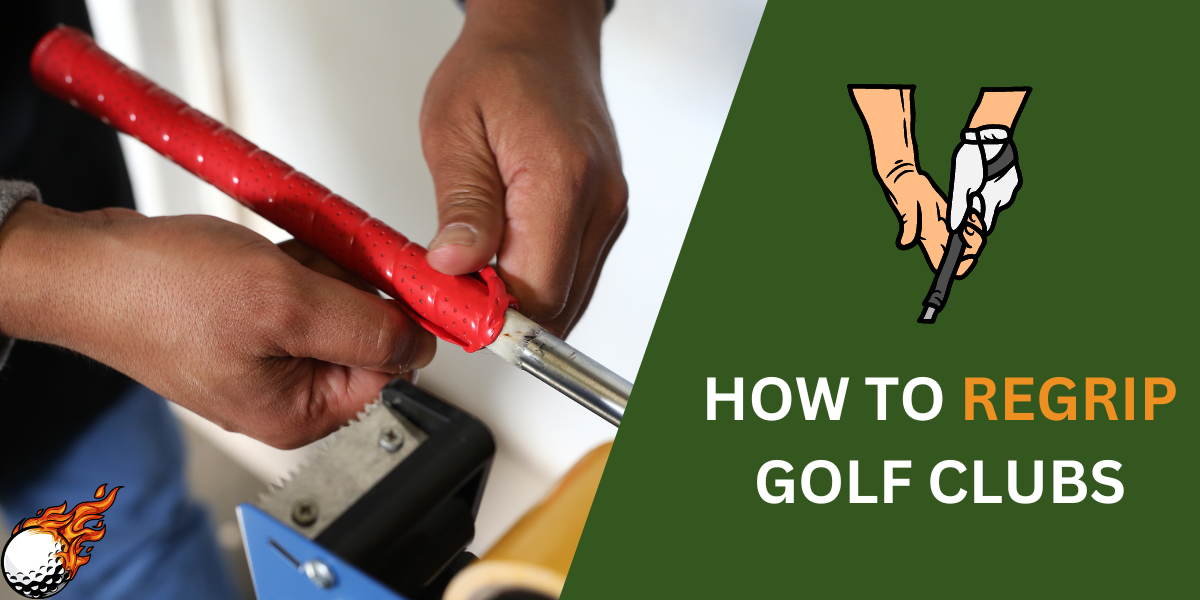
Have you ever wondered how long your golf cart battery lasts?
Whether it’s the traditional lead-acid battery or the newer lithium-ion kind, we’ll cover it all.
This guide will explore the different types of batteries, what impacts their lifespan, and how to get the most out of them. So buckle up, golf cart owners.
let’s dive in!
How Long Do Golf Cart Batteries Last?
- Battery Types:
- Lead-acid (flooded): 3-5 years
- Lead-acid (sealed, AGM): 5-7 years
- Lead-acid (sealed, gel): 5-7 years
- Lithium-ion: 10+ years
- NiMH (less common): 5-8 years
- Factors Affecting Lifespan: Usage, charging habits, maintenance, and temperature.
- Signs of a Dying Battery: Decreased range, sluggish performance, slow charging, visible damage.
- Extending Lifespan: Proper charging, regular maintenance, avoiding deep discharges.
- When to Replace: When you notice signs of failure or if your lead-acid battery is nearing the end of its expected lifespan.
- Choosing the Right Battery: Consider your budget, usage patterns, and desired maintenance level when selecting a battery type.
Types of Golf Cart Batteries and How Long They Last
Let’s talk about the different kinds of batteries you might find in your golf cart:

1. Lead-acid batteries
These are the old faithful of golf cart batteries – they’ve been around for ages. You’ll see two main types:
- Flooded Lead-Acid (FLA): This is the most common and usually the cheapest. However, it needs a bit of TLC—you’ll have to check the water levels in the battery cells regularly. With good care, it lasts about 3-5 years.
- Sealed Lead-Acid (SLA): Think of these like the low-maintenance cousins of FLA batteries. You don’t have to worry about water levels with these, and they typically last a bit longer – around 5-7 years. There are two kinds of SLA batteries:
- Gel batteries: These are spill-proof and can handle a few bumps on the golf course.
- AGM batteries (Absorbed Glass Mat): They charge faster than gel batteries and tend to do better in extreme temperatures.
2. Lithium-Ion Batteries
These are the new kids on the block, and they’re quickly gaining popularity for good reason.
Lithium golf cart batteries are known for their long life—with proper care, they can last ten years or more. They also charge faster, weigh less, and give you consistent power throughout your round.
However, there’s one catch: lithium batteries are pricier upfront than lead-acid batteries.
But if you consider how long they last and the fact that you won’t have to replace them as often, they might actually save you money in the long run.
Which One’s Right for You?
The best golf cart battery for you will depend on your budget, how often you use your cart, and your comfort level with maintenance.
If you want a budget-friendly option and are okay with checking the water levels, a flooded lead-acid battery might be your best bet.
But if you’re looking for a battery that lasts longer, charges faster, and requires less maintenance, then lithium-ion is the way to go.
Factors Affecting Battery Lifespan
Think of your battery’s lifespan as a balancing act influenced by several factors:

- Usage: Frequent, long drives and heavy loads drain your battery faster. Deep discharges are especially tough on lead-acid batteries. Choosing the right battery type for your needs can make a difference.
- Charging: Overcharging is harmful, so use the right charger and follow instructions. For lead-acid batteries, regular charging is key to maintaining their health.
- Maintenance: Lead-acid batteries require water level checks and terminal cleaning. Lithium batteries have built-in management systems, but they still benefit from proper care.
- Temperature: Extreme heat and cold can damage batteries. If you live in an area with harsh weather, take precautions to protect your battery when it’s not in use.
Remember, the better you care for your battery, the longer it will last, and the better your golf cart will run.
When to Replace Your Golf Cart Batteries
Just like anything else, golf cart batteries don’t last forever. But how can you tell when it’s time for a new one?
Here are a few signs your battery might be ready for retirement:
- Your Cart’s Not Going the Distance: If you used to be able to cruise around the course for 18 holes without a problem, but now you’re running out of juice after 9, it might be time for a new battery.
- Sluggish Starts and Slow Climbs: Does your cart struggle to get going or seem to slow down on hills? This could mean your battery is losing its power.
- The Charge Doesn’t Last: If you find yourself charging your battery more often than you used to, it could be a sign that it’s not holding a charge as well as it once did.
- The Battery Looks Weird: If you notice any leaks, cracks, or swelling in your battery, it’s definitely time to replace it. These are signs of damage and could be dangerous.

Lead-acid batteries tend to show these signs more quickly than lithium batteries, but even those don’t last forever.
If you have a lead-acid battery and notice any of these signs, it’s a good idea to check the water levels and clean the terminals.
But if the problems persist, it’s probably time for a new battery.
For lithium batteries, you can check the battery management system (BMS) for any error codes or warnings. If you see any, it’s best to consult with a professional.
Remember, ignoring these signs can leave you stranded on the course or even damage your golf cart. So, please pay attention to your battery’s performance, and don’t hesitate to replace it when it’s time.
Tips for Maximizing Battery Lifespan
Just like you wouldn’t skip your regular oil change or tire rotation for your car, giving your golf cart battery a little TLC goes a long way.
Here are some tips to keep your battery happy and healthy:
Charge It Right
This is the golden rule of battery care.
Make sure you’re using the right charger for your battery type, and follow the manufacturer’s instructions in the letter.
Don’t overcharge it, and try to charge it after each use. If you can’t charge it right away, don’t worry – just try not to let it sit for too long in a discharged state.
Keep It Clean
Dirt and grime can build up on your battery terminals, and that can cause problems.
Every now and then, give those terminals a good cleaning with a wire brush and a baking soda solution (just mix baking soda and water).

Check the Water (Lead-Acid Batteries Only)
If you have a traditional lead-acid battery, you’ll need to check the water levels regularly and top them off with distilled water if needed.
This is super important because if the water level gets too low, your battery won’t work properly.
Store It Right
If you’re not using your golf cart for a while, make sure you store the battery properly. For lead-acid batteries, this means keeping them in a cool, dry place with a partial charge.
If you have a lithium battery, check the manufacturer’s instructions for storage recommendations.

Don’t Be a Lead Foot
Yes, it’s fun to zip around the golf course, but going full speed all the time can put extra strain on your battery. Try to drive at a moderate speed, especially when going uphill.
This will help your battery last longer.
Remember, a little care goes a long way when it comes to batteries. By following these tips, you can keep your golf cart running smoothly and avoid unexpected battery problems.
Conclusion
So, there you have it!
We’ve covered a lot of ground about golf cart batteries, from the different types and what affects their lifespan to signs it might be time for a new one and how to take good care of the one you have.
Remember, no matter what kind of battery you have – whether it’s a trusty old lead-acid or a fancy new lithium-ion.
Taking care of it will help you get the most out of your golf cart and keep it running smoothly for years to come. So, go out there, hit the links, and enjoy your ride!

Frequently Asked Questions
How long does a golf cart battery last on average?
The average lifespan of a golf cart battery depends on its type and how well you take care of it. Traditional lead-acid batteries typically last 3-7 years, while lithium batteries or lithium-ion batteries can last ten years or more. The specific golf cart battery type you choose, and whether it’s a deep-cycle battery, will also impact its lifespan.
What type of battery is best for a golf cart?
The best golf cart battery depends on your needs and budget. Lead acid batteries are more affordable but require more maintenance, such as checking water levels regularly. Lithium-ion batteries are pricier but last longer, charge faster, and require less maintenance.
How can I tell if my golf cart battery is dying?
Several signs indicate a failing battery: decreased driving range, sluggish performance, slow charging, and visible damage like swelling or leaks. For traditional lead acid batteries, check the water levels regularly.
Can I extend the lifespan of my golf cart battery?
Absolutely! Proper charging, regular maintenance like cleaning terminals, and avoiding deep discharges can help extend your battery’s lifespan. Following the battery manufacturer instructions is crucial for optimal battery performance. Long ride can be crucial for your golf carts lead acid batteries.
What factors affect a golf cart battery’s lifespan?
Several factors impact battery life:
Usage: Frequent use and deep discharges shorten battery life.
Charging: Overcharging and undercharging damage traditional batteries.
Maintenance: Regular maintenance is essential for lead acid batteries.
Temperature: Extreme heat and cold can harm deep-cycle batteries. Store them in a cool, dry place when not in use.













